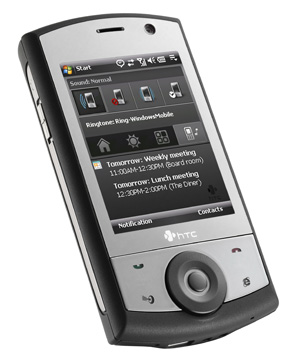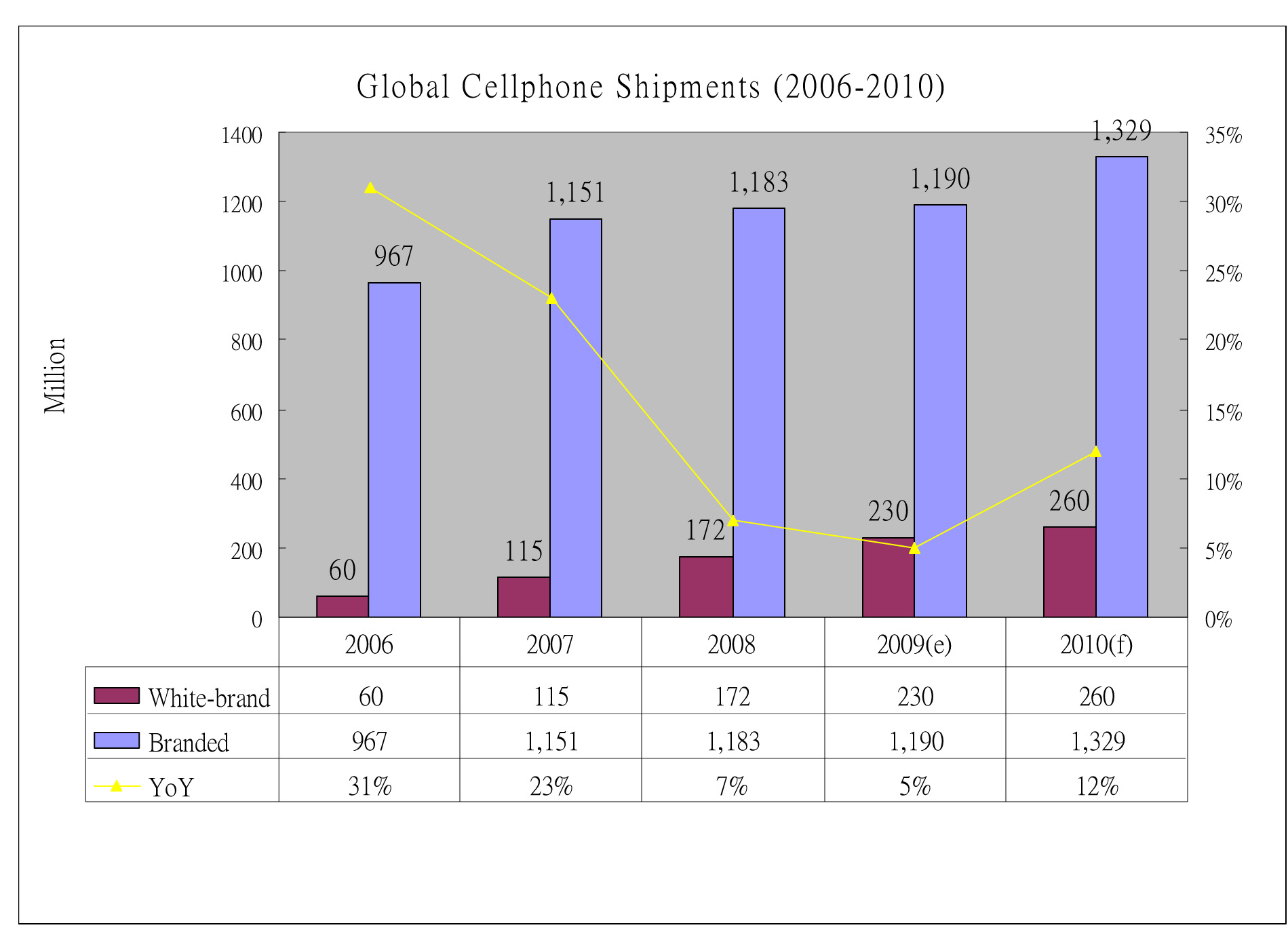Smartphone Shipments to Reach 235 million 2010: TRi
2009/12/07 | By Quincy LiangGlobal shipments of cellphones (excluding white-brand models) are forecasted to grow 12% to 1.33 billion units in 2010, including 235 million smartphones, after holding steady in 2009. The prediction was made by the Topology Research Institute (TRi), the largest private market-research firm in Taiwan.

Chen Wei-hang, a telecom researcher at TRi, says that emerging markets, especially China and India, will continue to be the major locomotive for the growth of handset shipments.
The penetration ratio of smartphones is forecasted to climb to 18% in 2010, up from 15% in 2009, a key factor in stabilizing the average cellphone selling price. Entry-level smartphone models, which are expected to generate higher margins and to have a bigger space for future growth, will attract more and more companies (existing cellphone makers or otherwise) to jump onto the bandwagon, making these the most-eye-catching models in the 2010 market.

Taiwan's share of global cellphone shipments will drop to under 4% this year, due to reduced orders from Motorola and Sony Ericsson, driving some manufacturers to shift their focus to smartphone products.
Emerging Markets
Chen says that the Asia/Pacific region (excluding Japan) will report the fastest economic growth in 2010, and will thus become a major target for the marketing of lower-level cellphones. Cellphone penetration in China, for example, is expected to hit 64% in 2010, representing total of 1.17 billion users. The growth rate of new subscribers is slowing down there; but 3G handset replacement purchases in southeastern Chinese cities, and strong demand from midwestern farm villages for extra-low-price models, are drawing attention.
In addition, TRi predicts that shipments of white-brand handsets in China will reach 260 million units in 2010, and that white-brand models pushed by local Chinese nameplates such as Haier, Changhong, and Hisense will transform into localized branded products after passing certification.
In contrast to the weakening of growth in China, India is in a stage of high-speed expansion. Its cellphone penetration rate is forecasted to reach 65.4% in 2010, for a total user base of 762 million. The number of users is expected to continue growing along with the completion of an increasing number of telecom construction projects in second- and third-tier cities.
New Focus: Entry-level Smartphones
TRi notes that according to its research, the growth of smartphone shipments stand out in the overall cellphone market. About 235 million smartphones are expected to be shipped in 2010, up 29% over 2009.
Chen says that the average selling price of smartphones, now about US$329, is three times that of feature phones and 10 times that of basic phones. But entry-level smartphones which use an open operating system (OS) and are priced between feature phones and high-end smartphones are expected to stimulate strong sales and further expand the smartphone market.
One interesting trend, TRi reports, is that more and more non-cellphone vendors, such as computer brands Acer and Dell, telecom carriers China Mobile, Vodafone, and T-Mobile, and even GPS device maker Garmin have been jumping into the smartphone industry. That, according to the research firm, is expected to increase the volume of OEM/ODM demand and accelerate the transformation of Taiwanese cellphone makers from suppliers of lower-end handsets into smartphone manufacturers. This will improve their product mix by allowing them to target more precise consumer groups; it will also boost their profit margins and expand their customer bases.
TRi also points out several major development trends in 2010 cellphone standards and applications.
The first is the increasingly mature technology for Wafer Level Chip Scale Packaging (WLCSP) camera modules, and a penetration of camera phones that has exceeded 80%. TRi forecasted that handsets equipped with five-million-pixel cameras would rapidly become a new trend, especially in the smartphone segment.
The organic light-emitting diode (OLED) display is another hot trend, along with larger-sized screens in the 2010 cellphone market. TRi pointed out that OLED displays have many advantages-they are self-laminating and backlight-free; they have high color saturation, high contrast, and rapid image response; they save energy and offer a wide viewing angle; and they are lighter and thinner than other screens-that will continue to make them hot items in the middle- and high-end handset market.
The third trend relates to the telecom system. TRi believes that the GSM system (including GSM, GPRS, EDGE, WCDMA, and HSPA) will continue to maintain its mainstream role in mobile telecoms in most of the world, and that it will keep growing as the second-generation (2G) system gradually penetrates second- and third-tier cities in emerging markets.
Global 3G handset shipments are stimulated by several factors, such as the demand for upgrading handsets in emerging markets and increasing shipments of smartphones. TRi forecasted that shipments of 3G models would continue to enjoy growth in 2010, and that these models would become a major force for growth in the overall cellphone market.

